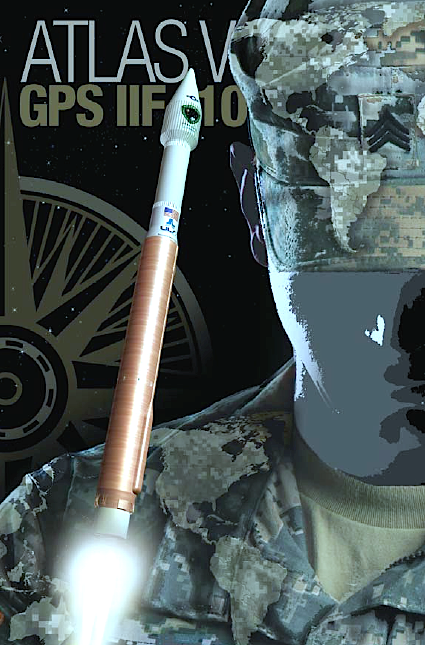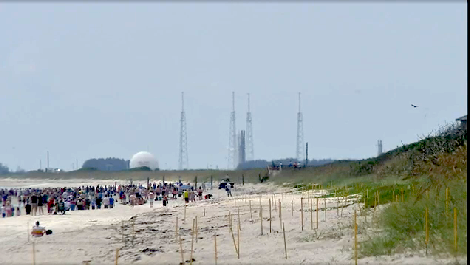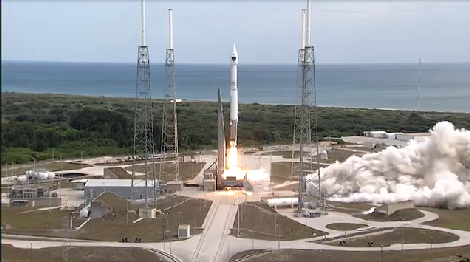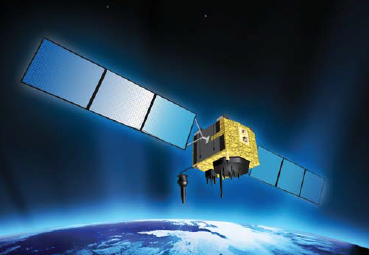[

Crowds await launch this morning.
[SatNews] A 'text book' launch took place moments ago, Wednesday, July 15 from Space Launch Complex 41 at Cape Canaveral Air Force Station in Florida at 11:36 a.m. EDT.
GPS IIF-10 is one of the next-generation GPS satellites, incorporating various improvements to provide greater accuracy, increased signals, and enhanced performance for users.
Launch Notes: GPS IIF-10 marks the 55th Atlas V launch since the vehicle’s inaugural launch in 2002 and the 27th flight of the 401 configuration. Every operational GPS mission has launched on a ULA or heritage rocket.
A United Launch Alliance Atlas V 401 launch vehicle will deliver the GPS IIF-10 satellite to semi-synchronous circular orbit. Liftoff will occur from Space Launch Complex 41 at Cape Canaveral Air Force Station, Florida.

It's a GO!
GPS utilizes 24 satellites, in six different planes, with a minimum of four satellites per plane, positioned in orbit approximately 11,000 nautical miles above the Earth’s surface.
The satellites continuously transmit digital radio signals pertaining to the exact time (using atomic clocks) and exact location of the satellites. The GPS IIF series have a design life of 12 years. With the proper equipment, users can receive these signals to calculate time, location, and velocity. The signals are so accurate that time can be measured to within a millionth of a second, velocity within a fraction of a mile per hour, and location to within feet. Receivers have been developed for use in aircraft, ships, land vehicles, and to hand carry.

GPS IIF-10 Courtesy of ULA.
As a result of increased civil and commercial use as well as experience in military operations, the USAF has added the following capabilities and technologies to the GPS IIF series to sustain the space and control segments while improving mission performance:
- Two times greater predicted signal accuracy than heritage satellites.
- New L5 signals for more robust civil and commercial aviation.
- An on-orbit, reprogrammable processor, receiving software uploads for improved system operation.
- Military signal “M-code” and variable power for better resistance to jamming hostile meeting the needs of emerging doctrines of navigation warfare.